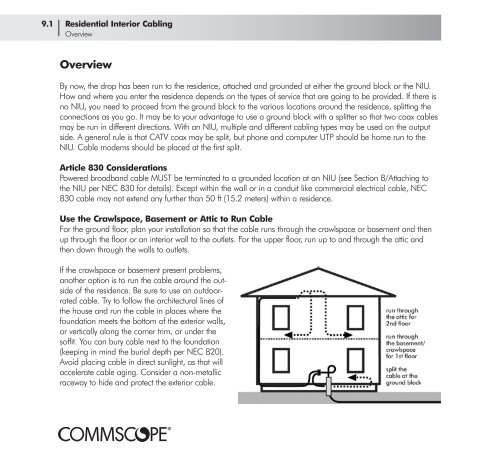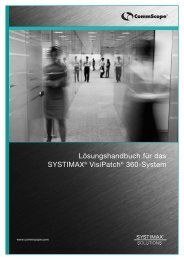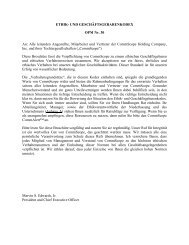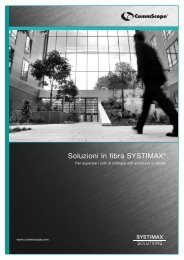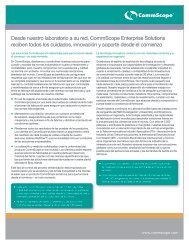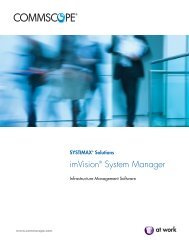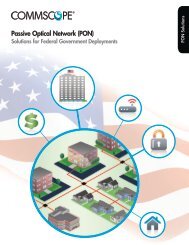Broadband Applications & Construction Manual - Public - CommScope
Broadband Applications & Construction Manual - Public - CommScope
Broadband Applications & Construction Manual - Public - CommScope
Create successful ePaper yourself
Turn your PDF publications into a flip-book with our unique Google optimized e-Paper software.
9.1 Residential Interior Cabling<br />
Overview<br />
Overview<br />
By now, the drop has been run to the residence, attached and grounded at either the ground block or the NIU.<br />
How and where you enter the residence depends on the types of service that are going to be provided. If there is<br />
no NIU, you need to proceed from the ground block to the various locations around the residence, splitting the<br />
connections as you go. It may be to your advantage to use a ground block with a splitter so that two coax cables<br />
may be run in different directions. With an NIU, multiple and different cabling types may be used on the output<br />
side. A general rule is that CATV coax may be split, but phone and computer UTP should be home run to the<br />
NIU. Cable modems should be placed at the first split.<br />
Article 830 Considerations<br />
Powered broadband cable MUST be terminated to a grounded location at an NIU (see Section 8/Attaching to<br />
the NIU per NEC 830 for details). Except within the wall or in a conduit like commercial electrical cable, NEC<br />
830 cable may not extend any further than 50 ft (15.2 meters) within a residence.<br />
Use the Crawlspace, Basement or Attic to Run Cable<br />
For the ground floor, plan your installation so that the cable runs through the crawlspace or basement and then<br />
up through the floor or an interior wall to the outlets. For the upper floor, run up to and through the attic and<br />
then down through the walls to outlets.<br />
If the crawlspace or basement present problems,<br />
another option is to run the cable around the outside<br />
of the residence. Be sure to use an outdoorrated<br />
cable. Try to follow the architectural lines of<br />
the house and run the cable in places where the<br />
foundation meets the bottom of the exterior walls,<br />
or vertically along the corner trim, or under the<br />
soffit. You can bury cable next to the foundation<br />
(keeping in mind the burial depth per NEC 820).<br />
Avoid placing cable in direct sunlight, as that will<br />
accelerate cable aging. Consider a non-metallic<br />
raceway to hide and protect the exterior cable.


